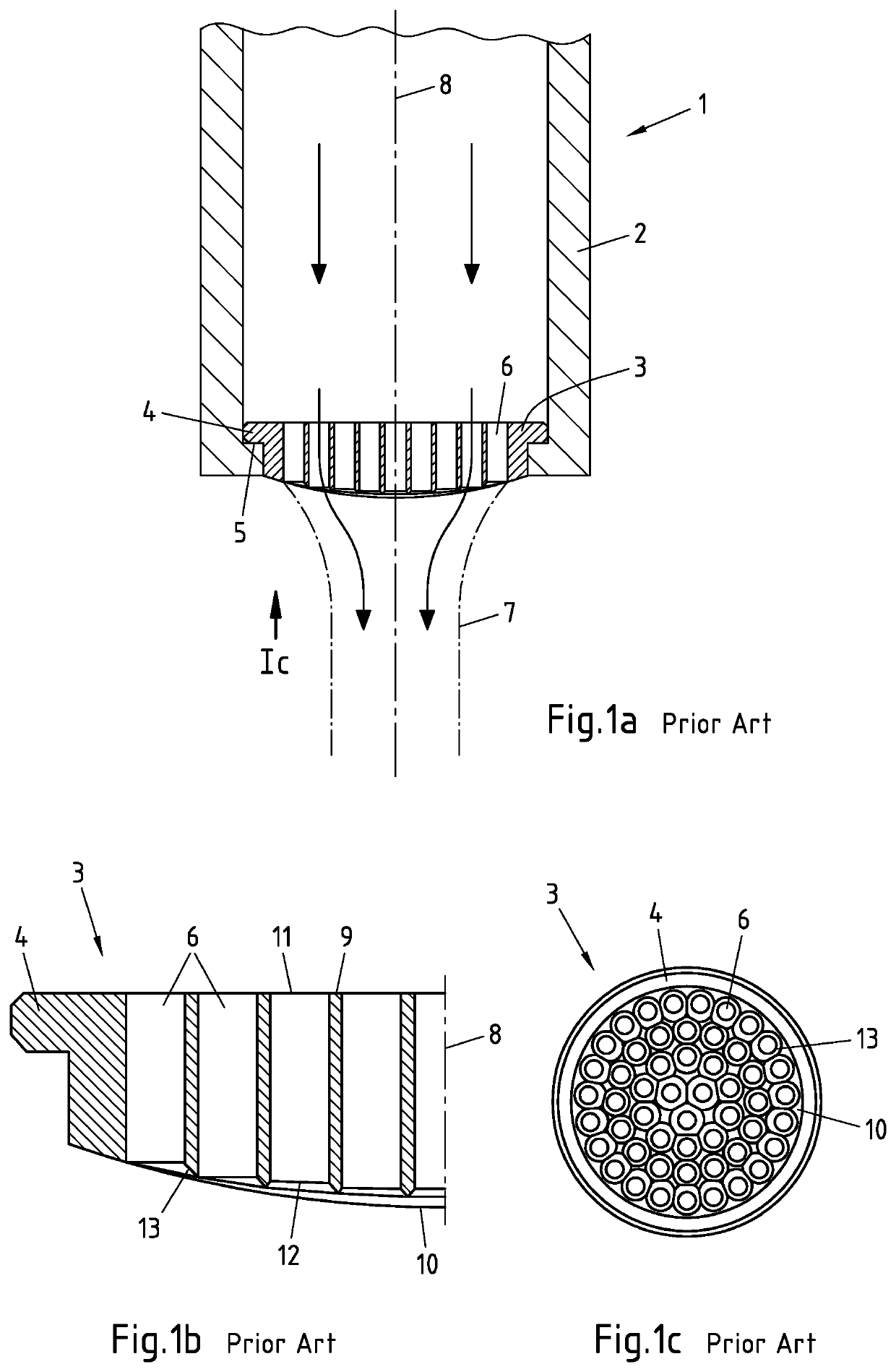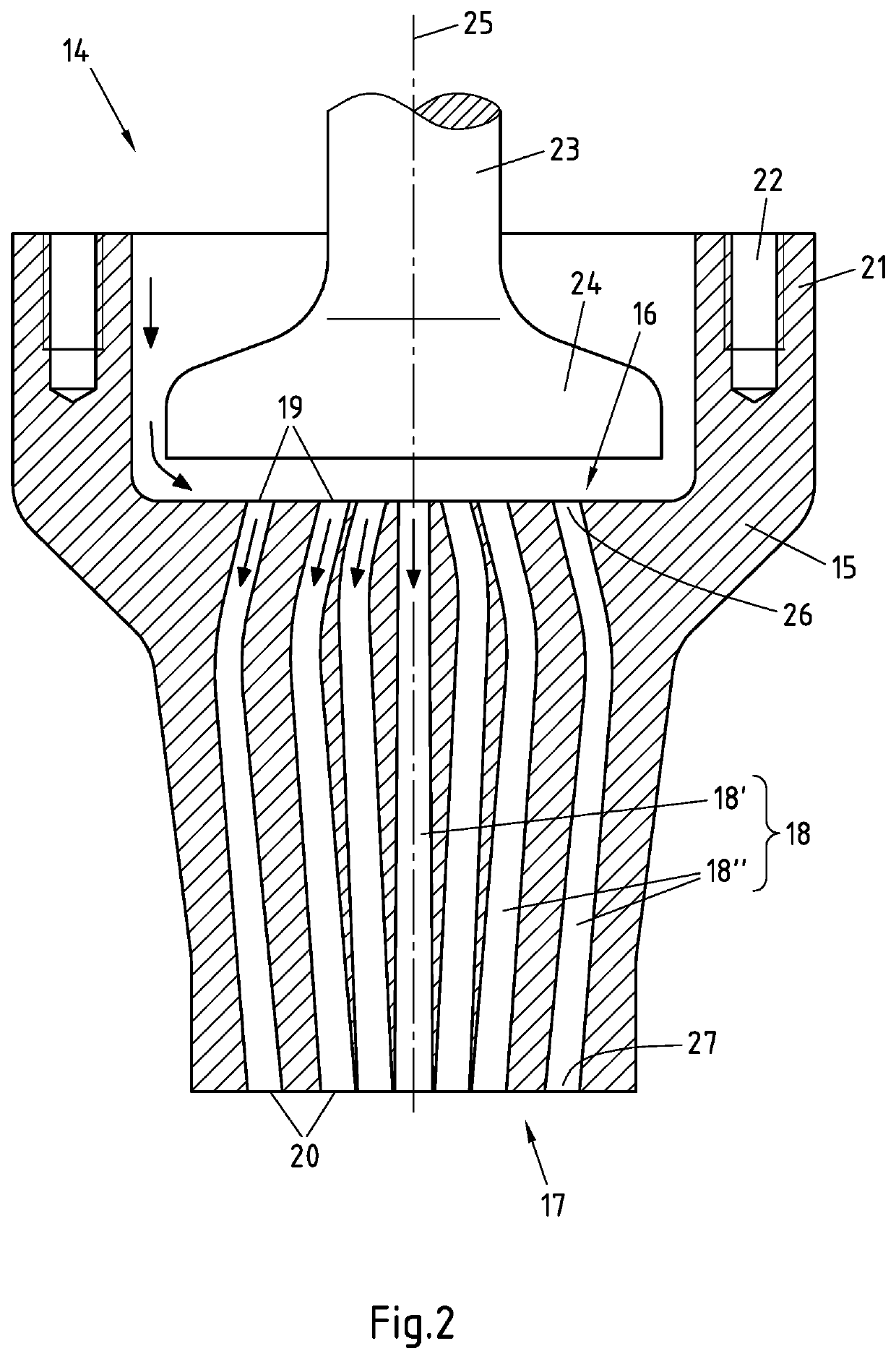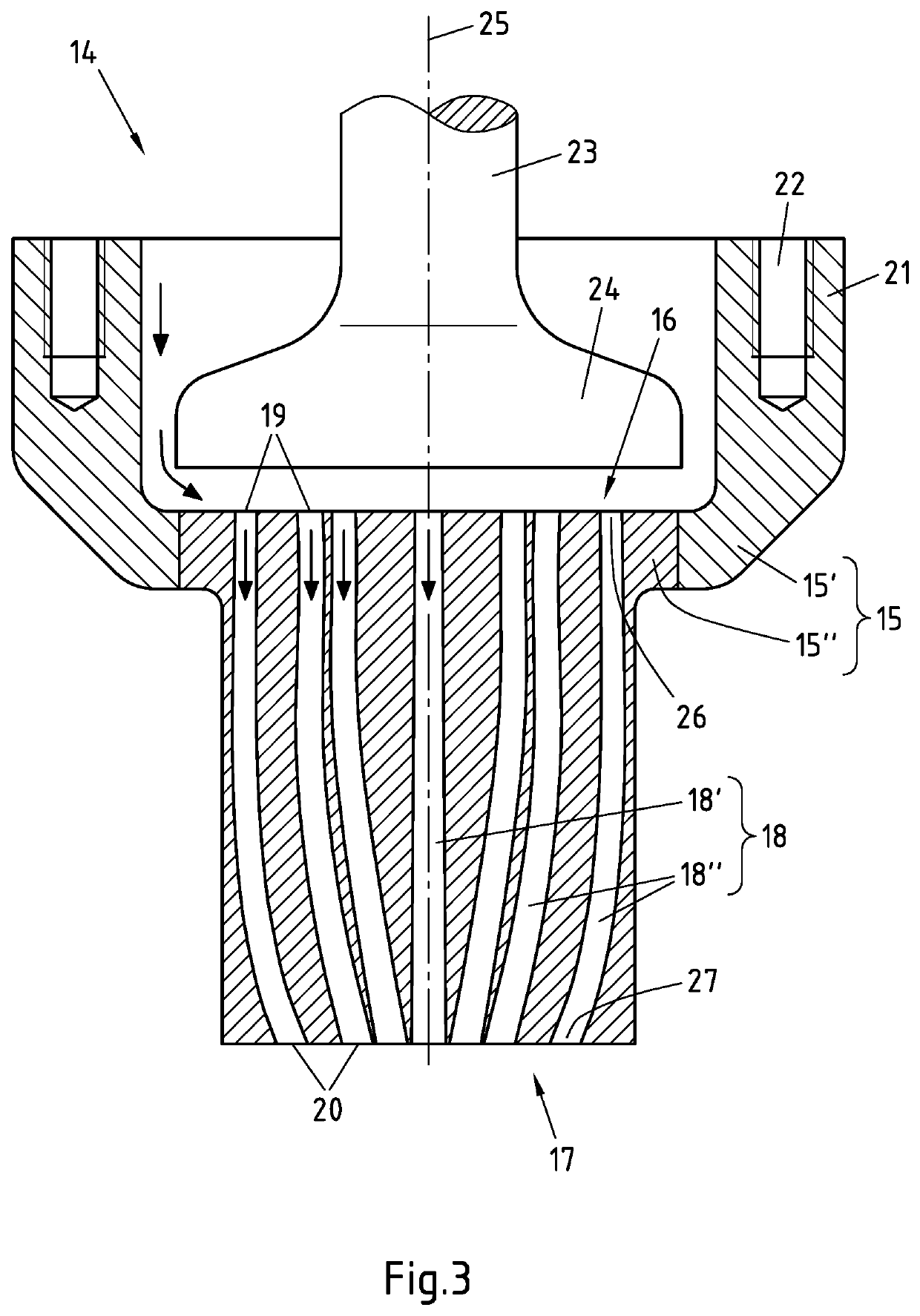Device for altering the jet shape of pourable products
a technology of pourable products and jets, which is applied in the field of pourable product jets, can solve the problems of insufficient hygienic requirements, different viscosities, and inability to regularly transfer the solutions of sanitary engineering to the field of food technology, and achieves low flow resistance, cost-effective production, and special cleaning. effective
- Summary
- Abstract
- Description
- Claims
- Application Information
AI Technical Summary
Benefits of technology
Problems solved by technology
Method used
Image
Examples
Embodiment Construction
[0048]In FIG. 1 a filling nozzle 1 known from the prior art is illustrated in cross-section. The filling nozzle 1 comprises a body 2 and a plate 3 for shaping the flow. The plate 3 can be inserted exchangeably into the body 2, by a circumferential flange 4, which is provided on the plate 3, being placed onto a projection 5 which is provided on the body 2. The plate 3 has several holes 6 which permit a through-flow—illustrated diagrammatically in FIG. 1a by arrows—of the filling nozzle 1 with pourable products. After the exit from the filling nozzle 1, the pourable products form a jet 7, the outer contour of which is shown in FIG. 1. A center axis 8 runs centrally through the body 2 and the plate 3.
[0049]FIG. 1b shows an enlarged cut-out of the plate 3 of the filling nozzle 1 of FIG. 1a in cross-section. The regions of the plate 3 already described in connection with FIG. 1a are given corresponding reference numbers in FIG. 1b. The plate 3 has an upper side 9 for the entry of the pou...
PUM
| Property | Measurement | Unit |
|---|---|---|
| inclination angle | aaaaa | aaaaa |
| inclination angle | aaaaa | aaaaa |
| inclination angle | aaaaa | aaaaa |
Abstract
Description
Claims
Application Information
 Login to View More
Login to View More - Generate Ideas
- Intellectual Property
- Life Sciences
- Materials
- Tech Scout
- Unparalleled Data Quality
- Higher Quality Content
- 60% Fewer Hallucinations
Browse by: Latest US Patents, China's latest patents, Technical Efficacy Thesaurus, Application Domain, Technology Topic, Popular Technical Reports.
© 2025 PatSnap. All rights reserved.Legal|Privacy policy|Modern Slavery Act Transparency Statement|Sitemap|About US| Contact US: help@patsnap.com



